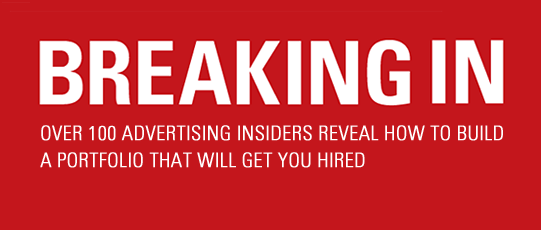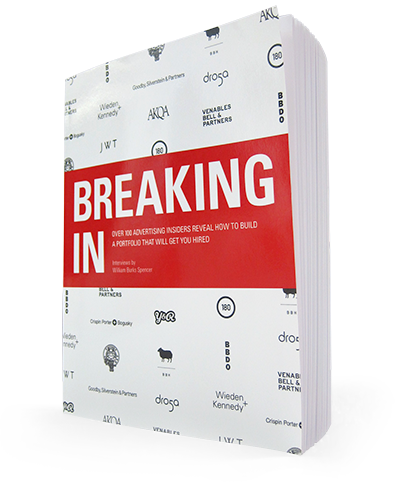Check out some great work from Luke Sullivan.
WS: What do you look for in a student portfolio? And what impresses you?
LS: Okay, so I was just interviewing a kid for his first job, right? Kid had just gotten out of a very good ad school. As we clicked through his book he said, “I’m sorry there’s not much advertising in here, but…” I interrupted him and said, “Dude, you had me at ‘sorry.’” No, there wasn’t a lot of advertising in there. But his book was filled with fascinating things, interesting content, and yes, pretty much everything except what I might call traditional advertising. And I loved it. What a book needs isn’t cool advertising. Just cool creative stuff. Yes, ultimately the work needs to have some sort of a commercial aspect to it, it has to report to some sort of purpose, some strategy…but show me something cool, something interesting, that’s what I need to see.
WS: How important is finish? Can sketches be enough?
LS: The short answer is, if your ideas are incendiary—I mean if they are hair-curlingly great—yes, you probably can get away with a less-than-finished look. But when you have a less-than-polished book, well, you have human nature working against you. It may not seem fair, but the better-looking books have an advantage. It has ever been thus. Remember the handsome stupid guys in high school? Dumb as a bag of scissors, and they still attracted all the great girls? Get over it. Anyway, I don’t care how you do it, but find a way to make your great ideas look like great ideas. I’m not talking about kick-ass finished art, but if you can go a level or two beyond stick figures, go for it.
WS: Do you look at actual paper books anymore, or is it all websites?
LS: I was once a fan of paper books. But I’m old school and I fondly remember turning the pages to see beautifully rendered print, outdoor, etc., one page after another. But I realize now it’s time to get over it. Today, I agree you need only a link to your portfolio and that’s pretty much it. Yes, a leave-behind can’t hurt once you land an interview, but if you can’t afford to print it beautifully, don’t do it.
WS: How important is copy? Do you need to see long-copy ads?
LS: No, I do not need to see long copy, as long as the rest of your work convinces me that you can write. I am seeing many books from copywriters where the concept is visually driven. Cool. I like writers who can think visually. But the thing is I need writers who can write, and not just create cool concepts. When you first start as a young writer in this business, it’s likely you will take on tons of jobs where there is no photography budget. And what artwork or visuals you do get to work with are usually stock shots of, say, the latest handset from Verizon or a three-quarters shot of a car. In which case, you cannot solve the problem visually. You will need to do something cool with words. I’ll put it this way. All books need to be conceptually great; that’s a given. But when I look at art directors’ books, I look for people who demonstrate the craft of art direction—of type, design, and the ability to make any page or screen look great. And when I look at writers’ books, I also look for craft there. Meaning, I want writers who can write.
[ … ]


Comments are closed.